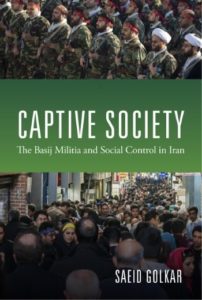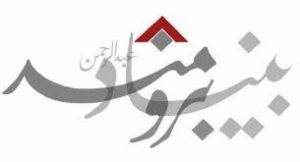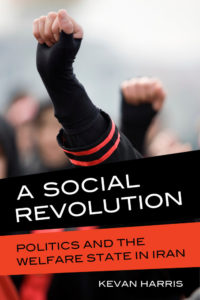 What do Iran’s leaders really fear? New York Times columnist Bret Stephens asks. Above all, a revival of the Green Movement that nearly toppled the regime following the stolen presidential election of 2009.
What do Iran’s leaders really fear? New York Times columnist Bret Stephens asks. Above all, a revival of the Green Movement that nearly toppled the regime following the stolen presidential election of 2009.
As Omid Memarian of the Center for Human Rights in Iran noted recently in Foreign Affairs, “The ferocity with which the authorities have persecuted human rights lawyers, who bring abuses to both domestic and international attention, reflects their fear of exposure and their urgent desire to evade accountability, he notes.
But the regime’s hardliners currently see no drawback to its bellicose strategy, according to Ellie Geranmayeh, a senior policy fellow at the European Council on Foreign Relations.
The current maximum pressure strategy has also left the Iranian regime highly suspicious and intolerant towards any form of dissent and given it a suitable excuse of a “foreign threat” to launch a brutal campaign of suppression. The various security apparatuses have cracked down not only on protesters, but also on journalists, students, women, and environmental activists, arresting them and handing them unprecedented jail terms, notes Saeid Golkar, professor at the Department of Political Science at the University of Tennessee, Chattanooga.
 Given that the middle classes are the engines of social and political change, their economic exhaustion and deprivation of their intellectuals and leaders will ultimately undermine any hope for a peaceful transition to democracy, he contends.
Given that the middle classes are the engines of social and political change, their economic exhaustion and deprivation of their intellectuals and leaders will ultimately undermine any hope for a peaceful transition to democracy, he contends.
An alternative strategy would “target specific individuals and institutions that control the Islamic Republic and are responsible for violence at home and abroad,” writes Golkar, author of the book, Captive Society: The Basij Militia and Social Control in Iran. “Only a pressure strategy that focuses on weakening the elites, rather than impoverishing ordinary Iranians could help bring about the political change both the Iranian people and the West want.”
 The West’s democracies should also take concrete action by invoking the recently passed Magnitsky Act and implement targeted sanctions – in the form of travel bans and asset freezes – against the top human-rights violators in Iran, according to Ladan Boroumand (above), of the Omid Memorial Human Rights Library, a former Reagan-Fascell Fellow at the National Endowment for Democracy, and Irwin Cotler, who currently chairs the Raoul Wallenberg Centre for Human Rights.
The West’s democracies should also take concrete action by invoking the recently passed Magnitsky Act and implement targeted sanctions – in the form of travel bans and asset freezes – against the top human-rights violators in Iran, according to Ladan Boroumand (above), of the Omid Memorial Human Rights Library, a former Reagan-Fascell Fellow at the National Endowment for Democracy, and Irwin Cotler, who currently chairs the Raoul Wallenberg Centre for Human Rights.
 For decades, political observers and pundits have characterized the Islamic Republic of Iran as an ideologically rigid state on the verge of collapse, exclusively connected to a narrow social base. In A Social Revolution, Kevan Harris convincingly demonstrates how they are wrong, according to the Johns Hopkins School of Advanced International Studies. Based on extensive fieldwork conducted in Iran, Harris shows how the revolutionary regime endured through the expansion of health, education, and aid programs that have both embedded the state in everyday life and empowered its challengers.
For decades, political observers and pundits have characterized the Islamic Republic of Iran as an ideologically rigid state on the verge of collapse, exclusively connected to a narrow social base. In A Social Revolution, Kevan Harris convincingly demonstrates how they are wrong, according to the Johns Hopkins School of Advanced International Studies. Based on extensive fieldwork conducted in Iran, Harris shows how the revolutionary regime endured through the expansion of health, education, and aid programs that have both embedded the state in everyday life and empowered its challengers.
State and Society in Iran RSVP
Tue, November 19, 2019. 12:30 PM – 2:00 PM EST. Add to Calendar
Location: Bernstein-Offit Building, 1717 Massachusetts Avenue NW, Room 500, Washington, DC 20036. View Map
Hosted by The Johns Hopkins School of Advanced International Studies, the Rethinking Iran series brings a fresh perspective to exploring the cultural, societal, and political consequences of the 1979 Revolution within Iran and across its borders. The initiative presents an in-depth view of modern Iranian culture and society by offering insights from artists, journalists, academics, and other subject-matter experts alongside hot-button geopolitical issues. The series is directed by Assistant Professor of Middle East Studies Narges Bajoghli.
Dr. Kevan Harris, a graduate of Johns Hopkins University, is an assistant professor of sociology at UCLA. He is a historical sociologist studying development and social change in the global South. His recent work has included primary source research on welfare politics and social mobility in pre- and post-revolutionary Iran. His book A Social Revolution: Politics and the Welfare State in Iran was published in 2017.







